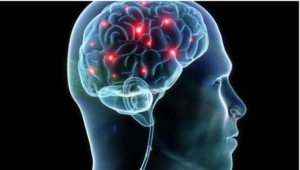
Today, for many of us, our lives are so preoccupied with work that our health and fitness are nowhere on the priority list and we end up consuming a lot more processed and fatty foods. If we cannot dedicate a single hour to our health every day, then diseases and poor health can be the consequence.
Did you know:
- An hour of a cardio workout can reduce the risk of a heart attack by 28%.
- 30 minutes of cycling can reduce the risk of Type 2 diabetes by 40%
But many people think of a cardio workout as a high-intensity exercise where the heartbeat gets out of control and the person is drenched with sweat. While this is true to some extent, a cardio workout does not always have to be high intensity. Instead, there is some medium to low-intensity cardio workouts that are excellent for your entire body. And they are none other than cycling and swimming.

Now if you are asked to compare the two exercises, you can think of it statistically. Regular cycling reduces the chance of early death by 10% but those who swim regularly have a 28% decreased risk of a heart attack. While numbers are a good way to judge, they are often not the best choice. And the answer to which cardio exercise is the best depends on a number of other factors. So let’s look into the details.
Resource
For swimming, it should be a pool, but even a lake or a beach can suffice. In the case of cycling, all you need is a bicycle and you are good to go. You can ride it to the park, to run errands or even to ride to work. Or you can take a leisure ride before the end of your day. Unlike swimming, where you need a specific resource, you can ride a bicycle literally anywhere.
Cost
Swimming is generally considered an expensive activity. Primarily because maintaining a pool is expensive. Also, you need accessories such as goggles, fins and kickboards. Good quality swimming accessories are also expensive. But if you compare it with cycling, all you need is a bicycle and a helmet. To be extra cautious, you may want to invest in elbow and knee pads, but unlike swimming, this is not a requirement.
That said, the cost of a bicycle is much more than all of the accessories required for swimming. But again, if you look at the annual membership costs for a pool, cycling is indeed a more cost-effective option.
Calories and Burning Fat

The best aspect of any exercise is calories and fat burning. People usually classify exercises based on how many calories they can burn. So let’s look at the numbers. An average person uses almost 300 calories while riding a bicycle for 30 minutes, but the same person while swimming freestyle burns 255 calories. So numerically cycling wins. But here is another aspect. During swimming, since the body is submerged in water, you don’t feel your full body weight. This makes swimming easier and people often end up swimming more without getting tired. This also makes it an ideal workout for people with arthritis or other bone diseases such as osteoporosis.
Also, since the body weight is supported by water, swimming makes an excellent workout for people with cardiovascular diseases. In the water, even though you are exercising, it has a relaxing effect on the heart. In some cases, it has been observed that the heartbeat goes down to as low as 55 beats per minute and still maintains proper blood supply in the body. Hence swimming is an excellent exercise for people with cardiovascular diseases. On the other hand, cycling is a typical cardio exercise that increases heart rate. So if you are a cardiovascular patient, swimming is completely safe but if you want to ride a bicycle, make sure you discuss it with your healthcare provider.
Another important aspect of swimming is that it involves the use of all muscles of the body. People who swim regularly, notice a significant change in their body shape even if they don’t lose weight.
Risk of Injuries
As you swim, the arms and legs are in continuous motion. This can increase pressure on the shoulders and the collar bone. Over longer periods, these two bones can get hurt and start to roughen up resulting in inflammation and pain. But at the same time, swimming involves all the parts of the body, not as much with cycling. Physically you feel fit and new blood vessels and energy-producing structures called mitochondria grow at a much faster rate than other exercises.
However, when it comes to cycling, there is always a greater risk of injuries. In case of a crash or fall, there is a higher risk of damage to vital joints such as the knee and hip joint. But on a positive note, these severe injuries are not so common during everyday life; however, they are more frequent in professional cycling. In case, you have visual or motor coordination problems, it is ideal to discuss them with your healthcare provider before you start cycling.
Conclusion
Whether it is cycling or swimming, both come with their own benefits and costs. According to research, more people pursue cycling into their routine compared to swimming. The reason for that is convenience. Cycling is easy to incorporate into a daily routine as it is also a mode of transportation but swimming is something special you need to take out time for.
But then again, the choice depends only on personal preference. While cycling can help you maintain health and fitness, there is technically no exercise that has an exceptionally mild impact on the body associated with all the health benefits of a cardio workout.



















 Meditate or download apps on your phone to help you relax. Take deep breaths as much as possible and think that everyone is in this crisis together, so you need to stay strong. Destressing is critical if you want to control your anxiety levels.
Meditate or download apps on your phone to help you relax. Take deep breaths as much as possible and think that everyone is in this crisis together, so you need to stay strong. Destressing is critical if you want to control your anxiety levels. 

 According to the experts at the University of Maryland Medical Center, ginseng is an adaptogen. Adaptogens are herbal substances that help stabilize the physiological processes that take place inside the body and promote
According to the experts at the University of Maryland Medical Center, ginseng is an adaptogen. Adaptogens are herbal substances that help stabilize the physiological processes that take place inside the body and promote  Flu is a common ailment that people face during seasonal changes and with the ongoing
Flu is a common ailment that people face during seasonal changes and with the ongoing  Even though people are increasingly indulging more and more in regular workout regimens, there is still a significant number of people who live a sedentary life, which makes them susceptible to multiple health problems. Furthermore, the lack of activity in the lives of such people makes them weak and lethargic. Drinking ginseng tea can help those who lack energy in their lives.
Even though people are increasingly indulging more and more in regular workout regimens, there is still a significant number of people who live a sedentary life, which makes them susceptible to multiple health problems. Furthermore, the lack of activity in the lives of such people makes them weak and lethargic. Drinking ginseng tea can help those who lack energy in their lives.